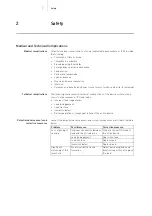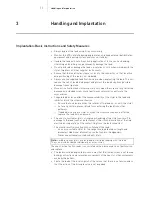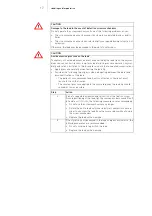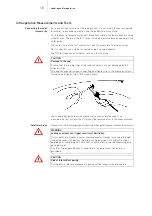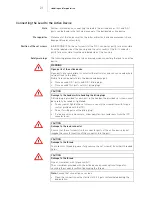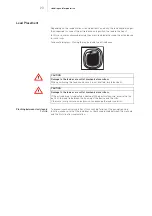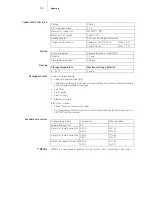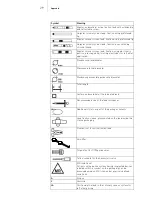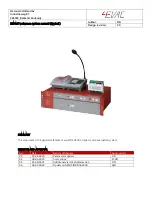
!
!
CAUTION
Damage to the lead in the event of defective screw mechanisms
Do not operate the screw mechanism if one of the following problems arises:
Otherwise, the lead may be damaged to the point of uselessness.
!
!
CAUTION
Avoid excessive pressure on the lead
Temporary or sustained excessive pressure exerted by the lead tip on the myocar-
dium can cause short-term or long-term lead failure, pressure necroses, myocar-
dial perforations, irritation to the tricuspid valve or other unwanted complications.
Step
Action
4
5
17
Handling and Implantation
•
The screw mechanism has become sticky due to coagulated blood or bodily
fluids.
•
The screw mechanism has been substantially overwound during retraction or
extension.
•
Apply pressure carefully when fixating the lead tip.
•
Consider the following two aspects when elongating between the distal and
proximal fixations of the lead:
— The patient's own movement and heart contractions should not exert
tensile force on the fixation.
— The constant pressure applied to the myocardium by the lead tip should
remain as low as possible.
If, due to repeated extension and retraction of the fixation screw
(from repositioning of the lead tip), the mechanism becomes difficult
to handle or if it sticks, the following measures are recommended:
•
Do not use the screw mechanism any longer.
•
Rotate the entire lead with inserted stylet counterclockwise in
order to unscrew the lead from the myocardium without using
the screw mechanism.
•
Replace the lead with a new one.
If the stylet can only be moved in the lead using excessive force, the
following measures are recommended:
•
Do not continue to reposition the lead.
•
Replace the lead with a new one.





